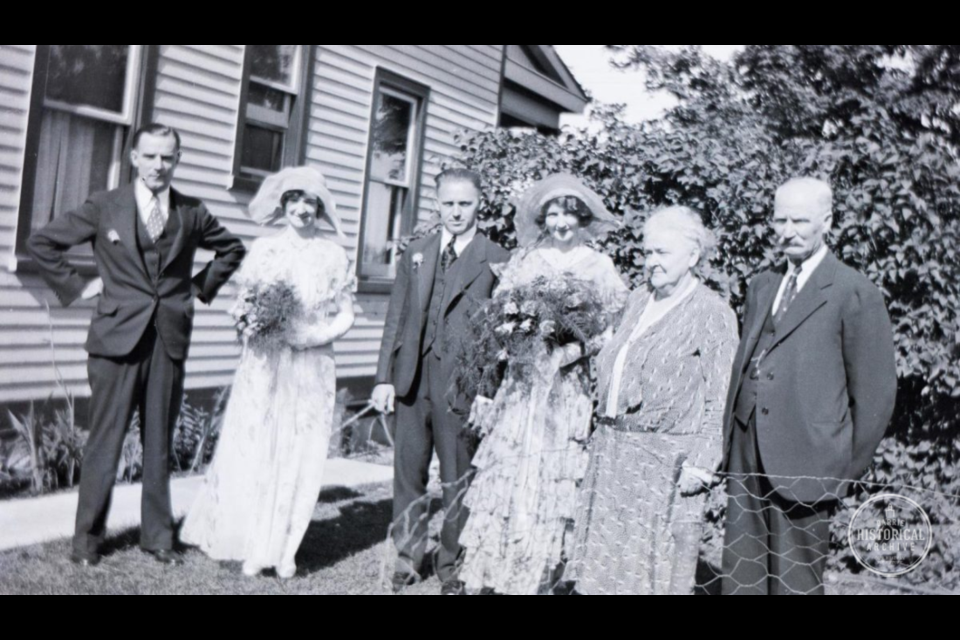Almost a year ago, I wrote a story about the early days of dentistry in Barrie. As you can imagine, the practices involved in that discipline were somewhat frightening to consider, but they were no worse than some of the treatments that women voluntarily subjected themselves to in the name of beauty!
“Miss Arnold’s Beauty Salon. Marcelling, Shampooing, Ladies’ Hair Cutting. Clapperton Street, Barrie.” Barrie Examiner September 16, 1926.
To go back just a little bit, the bob or short hair cut had become very popular just after the Great War. Female ambulance drivers and Red Cross workers had been cutting their hair to simplify their lives while working in the battlefields, and their style came to represent young, energetic and independent women, and it quickly became a hot trend.
The next stage was the marcel wave, named for nineteenth century French hairdresser, Francois Marcel, who invented the process that created that iconic 1920s look. The waves were made by heavy tongs that were heated over a gas burner and applied to sections of hair. The tongs were held first to a piece of paper, and if the paper burst into flames, the tongs were too hot!
“Announcing the installation of the Genuine Naturelle Croquignole Permanent Waving Equipment. Moderne Beauty Shop.” Barrie Examiner June 15, 1933.
Finger waves, pin curls and marcelles would only last until the next rainy day, so the search for a lasting hair-do in Barrie ended with the arrival of this modern piece of machinery. Grace Goring’s Moderne Beauty Shop was located in part of the Roxy Theatre, and there must have been great excitement the day the croquignole was installed.
Imagine, if you can, a strange electrical chandelier suspended from the ceiling of the salon, with 22 cords hanging from it, each one with a metal tube on the end. Then picture a lady customer with all of her hair tightly wound onto pointed curlers that stood straight out from her head like spikes. After her hair was chemically treated, the curlers were inserted into the tubes on the croquignole machine, which was then turned on to heat the hair and speed up the perming process.
As bizarre as this device sounds, it was some great improvement over earlier contraptions. Karl Nessler, a German hairdresser, had been working on creating a permanent wave process for years, and by 1905 he concocted a perm solution based on cow urine. He invented an early version of the croquignole that used 12 two-pound brass curlers heated to 100 degrees Celsius and required the customer to sit for six hours!
‘’Fountain of Youth for Hair! Lovalon is that wonderful odourless vegetable rinse which brings lustrous highlights and natural silken softness to the hair. Lovalon does not bleach or dye.”
On April 18, 1935, when this ad for Robertson’s Drug Store appeared in the Northern Advance, few Barrie ladies would have been colouring their hair, and if they did, they would likely have been doing it in secret. Sure, dyeing and bleaching was fine for movie starlets, but for proper ladies and housewives, it was considered to be borderline scandalous.
The ladies of Barrie were better off avoiding those harsh procedures anyway. Miss Jean Harlow, of 1930s silver screen fame, soaked her hair in a mixture of Clorox bleach and soap flakes to achieve the platinum tone that she always insisted was natural.
Salon bleaching could be just as dangerous. Customers commonly suffered blisters to the scalp, headaches or eye injury after treatments, and even famed stylist Vidal Sassoon remembered the “primitive” days when he and other hairdressers mixed peroxide in a bowl with exactly three drops of ammonia and hoped for the best.
Each week, the Barrie Historical Archive provides BarrieToday readers with a glimpse of the city’s past. This unique column features photos and stories from years gone by and is sure to appeal to the historian in each of us.



